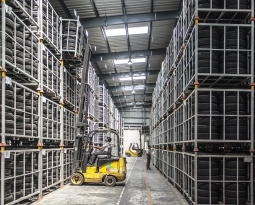U.S. R&D and Innovation in a Global Context
The American Association for the Advancement of Science (AAS) has recently released a report (available here as a downloaded PDF) summarizing how the U.S. is stacking up globally in the world of R&D based on 2021 data.
Pulling together data from the Organisation of Economic Cooperation and Development (OECD), the Web of Science’s publication archives, and the World Intellectual Property Organization (WIPO), AAS has found that the U.S. remains the largest R&D spender but isn’t holding up in other metrics.
The U.S. ranked 4th in total R&D intensity, 12th in government R&D intensity, 5th in basic science intensity and 14th in number of researchers adjusted for labor force. In this case, R&D intensity refers to R&D as a share of gross domestic product or what percentage of a country’s total expenditure is directly related to R&D. While the U.S. spends the most on R&D in absolute dollars, they spend a smaller percentage of total GDP on R&D than others. This suggests that those with a higher R&D intensity have a greater relative focus on science and innovation.
The report also highlights a rapidly growing interest and investment in R&D by China. China is the largest non-OECD economy reporting R&D funding and contributes 27% of R&D investments globally. The U.S. funds 32% of global R&D.
China has been climbing the list of R&D contributors, surpassing the EU as the largest researcher workforce in the world in 2013. In addition, China published the most scientific publications (approximately 850,000) with the U.S. close behind with approximately 625,000 articles.
It is important to note that China has been increasing their R&D investment opportunities. Businesses in China are currently benefiting from a pre-tax super deduction of R&D expenses, allowing companies to deduct 200% of their China-based R&D expenses. The U.S., on the other hand, has recently made R&D investments less enticing by requiring businesses to capitalize and amortize costs over 5 years.
If the U.S. wishes to maintain their edge on innovation and their title as an R&D powerhouse, it may be time for them to rethink their approach to R&D incentives and support the small, medium, and large businesses that are responsible for innovation and advancement.
Are you developing new technology for an existing application? Did you know your development work could be eligible for the R&D Tax Credit and you can receive up to 14% back on your expenses? Even if your development isn’t successful your work may still qualify for R&D credits (i.e. you don’t need to have a patent to qualify). To find out more, please contact a Swanson Reed R&D Specialist today or check out our free online eligibility test.
Who We Are:
Swanson Reed is one of the U.S.’ largest Specialist R&D tax advisory firms. We manage all facets of the R&D tax credit program, from claim preparation and audit compliance to claim disputes.
Swanson Reed regularly hosts free webinars and provides free IRS CE and CPE credits for CPAs. For more information please visit us at www.swansonreed.com/webinars or contact your usual Swanson Reed representative.

















